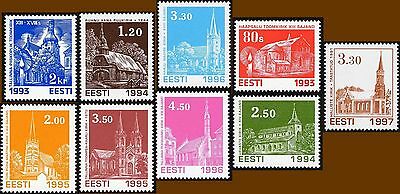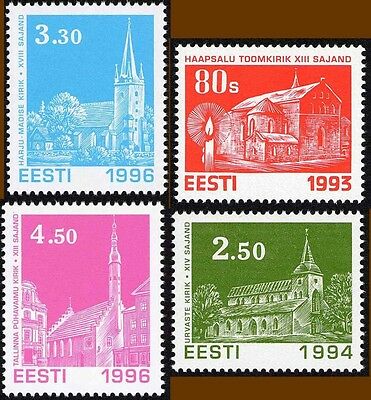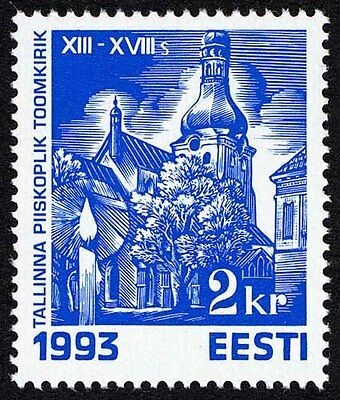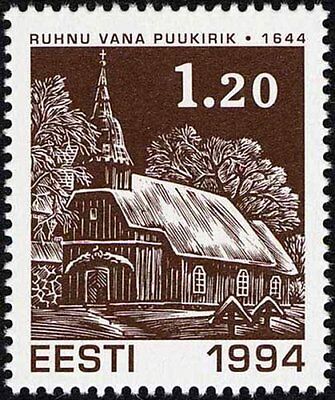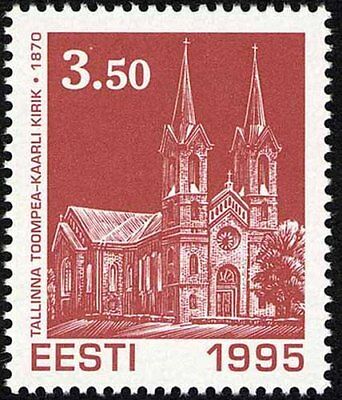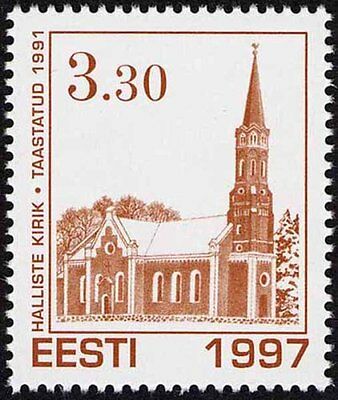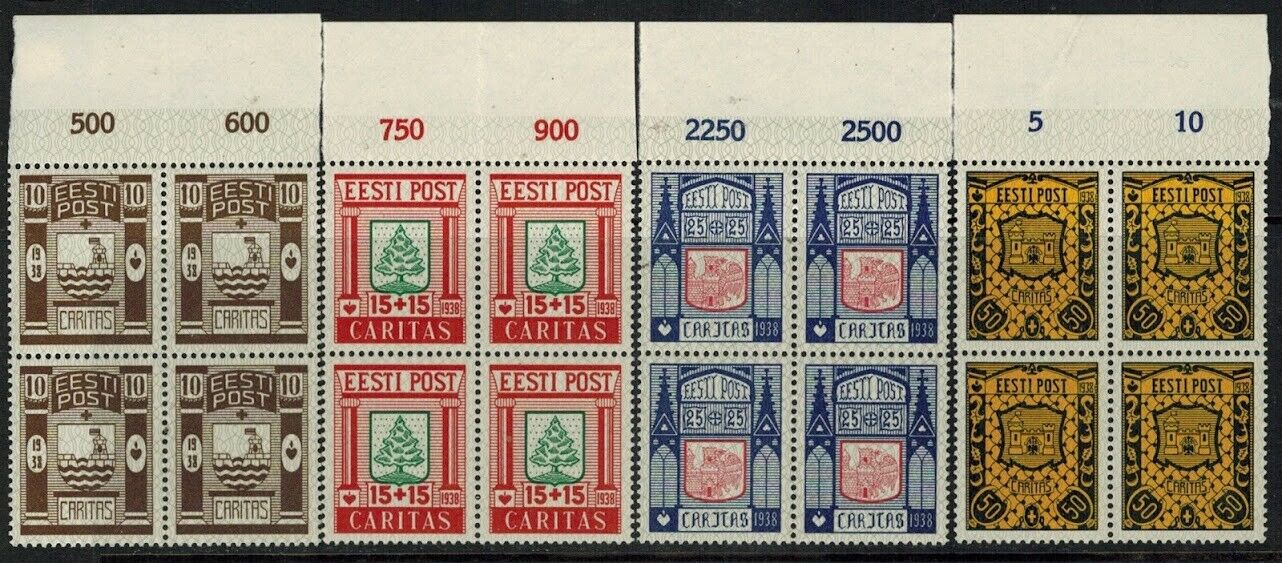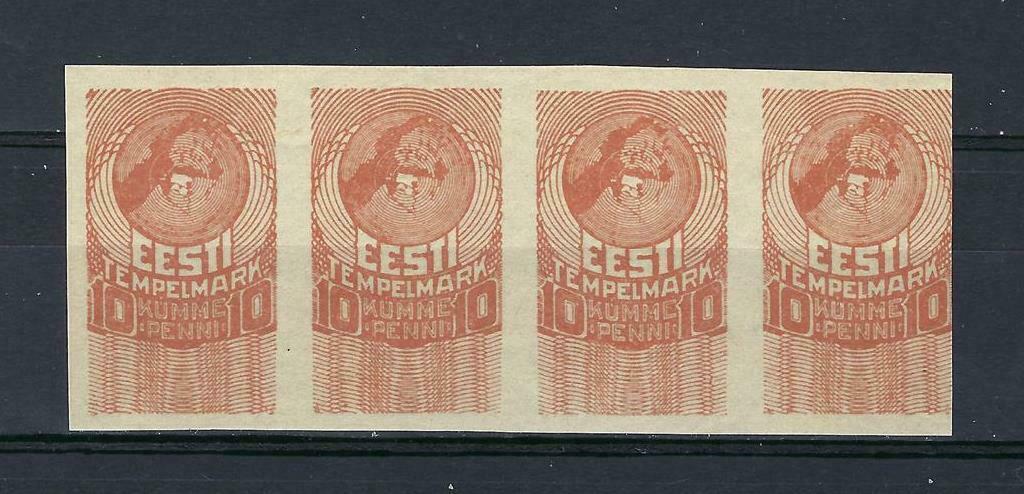-40%
Stamp SET of ESTONIA - 1993 - 1997 Churches of Estonia ( 9 stamps)
$ 5.25
- Description
- Size Guide
Description
STAMP SET OF ESTONIA 1993 - 1997 - Churches of Estonia (9 stamps)Shipping and handling:
International regular mail: 2.95$ Registered mail with tracking number: 7.90$
Combined shipping available -
NO extra charge for additional stamps/ FDCs
.
Payment: PayPal
.
!! ATTENTION !! Buyers from RUSSIA and BELARUS. I will ship ONLY by registered mail – 6.50$.
B
нимание
покупатели из России
и Беларусь.
Отправка
Ваш
ег
о
заказ
а только
заказным письмом - 6.50$
1993 -
The medieval Cathedral (1279) is the largest single-nave church in the Nordic and Baltic countries. The baptismal chapel is unique, and thanks to its good acoustics, is a wonderful concert venue.
Good to know: * During the Soviet period the building was a grain warehouse and there were plans to install a swimming pool. * During the full moon in August, you could see the White Lady in a church window. According to legend, a young priest brought his beloved into the castle dressed as a choirboy, however women were forbidden to enter the castle. The Bishop discovered the deception and had the girl walled into castle wall while she was still alive. Walking among the castle walls you will feel like you’re in a romantic old movie
…
1993
-
The Cathedral of Saint Mary the Virgin in Tallinn
(also known as the Dome Church) was first mentioned in records in 1233. It was dedicated to the Virgin Mary seven years later.
Worthy of attention inside the church are the gravestones from the 13th-18th centuries and the coat of arms epitaphs dating from the 17th-20th centuries.
The most famous people to be buried in the church include renowned Swedish military officer Pontus De la Gardie; his wife, Swedish King Johann III's daughter Sophia Gyllenhelm; Admiral Samuel Greigh; and Admiral Adam Johan von
Krusenstern - the first man to lead a Russian round-the-world voyage.
1994
- Urvaste Church (late 13th or early 14th century), is the only basilica-type country church in Estonia. Situated in the South Estonian Võru County.
1994
- Ruhnu Church, built 1644 to replace an earlier chapel, is the oldest surviving monument of wooden architecture in Estonia. Situated on the island of Ruhnu in the Gulf Riga.
1995
- A hall church originally built in the late 13th century, with a much later tower dating from 1867 (destroyed in World War II and restored in 1972). The interior of St. Martin´s of Türi is among the most beautiful Estonian churches. Its art treasures include a 1693 baroque altar wall carved of wood by Christian Ackermann of Tallinn as well large side figures carved in baroque style. Most other furnishings are 19th century.
1995
- Designed by academician Otto Hippius, Charle´s church was built in 1862-1682, and was first used for Christmas 1870. Built entirely of the local grey limestone, the twin - towered pseudo - Romanesque church is an outstanding example of the Historical style in Estonia. It has a cross - shaped ground plan and an interesting roof construction. The church is famed for its large fresco of Christ, Come to Me, by the prominent Estonian painter Johan Köler. Named after King Charles XI of Sweden.
1996
-
Although likely to have been founded in the first half of the 13th century, the Holy Chost of Tallinn acquired its present two-aisled appearance in the mid- 14th century. The ground plan is asymmetrical, with the choir built as an extension of the north aisle. It has a high gable roof and stepped gables – an exceptional feature in Tallinn. The octagonal tower is topped by a baroque steeple, and the oldest bell dates from 1433. the most remarkable element in the 15th- 18th century interior is the main altar (1483 by Bernt Notke). Mounted on the northern wall of the church is the oldest public clock in Tallinn (1684). For long years, the church served as the chapel for the adjacent almshouse and the city council. After the Reformation it become of the seat of Tallinn´s Estonian-speaking congregation. Several pastors of the church have played important roles in Estonia´s cultural history.
1996
-
Originally built in the 1460s and extended in the 1670a, Harju-Madise church acquired its present appearance as a result of major rebuilding in 1765-1773. it is ole of few 18th century churches in the country. It has a one-nave main body and a narrower baroque choir with a triangular apse at its eastern end. The 1765 vestry at the north side of the choir has a stylish fireplace, and adjoining the main body on the south is a small funeral chapel. A quadrangular tower stands at the western end. The church, a mixture of styles from late Gothic to early Classical, but with a distinct 18th century look, has a prominent location on the bluff overlooking the sea.
1997
-
St. Anne’s of Halliste is the Viljandimaa county in southern Estonia was probably built in the later half of the 15th century. It had a three-aisle body with octagonal pillars and a square choir. Several destructions and repairs later, the church was rebuilt in 1864-67 in the spirit of Romanesque revival, but was again destroyed in a fire on 28 April 1959 and remained standing an empty shell. The corner stone to its reconstruction was laid exactly thirty years later in the new national liberation period when Estonia was nominally still part of the Soviet Union. Regular services at Halliste started at Christmas in 1990. St. Anne’s of Halliste was consecrated on 21 December 1991, the first church to have been inaugurated in the newly independent Estonia. The organ, of U. S. make, is a gift by Finnish churches, and its altarpiece by the modern Estonian painter Jüri Arrak is a powerful and gripping piece of art.
